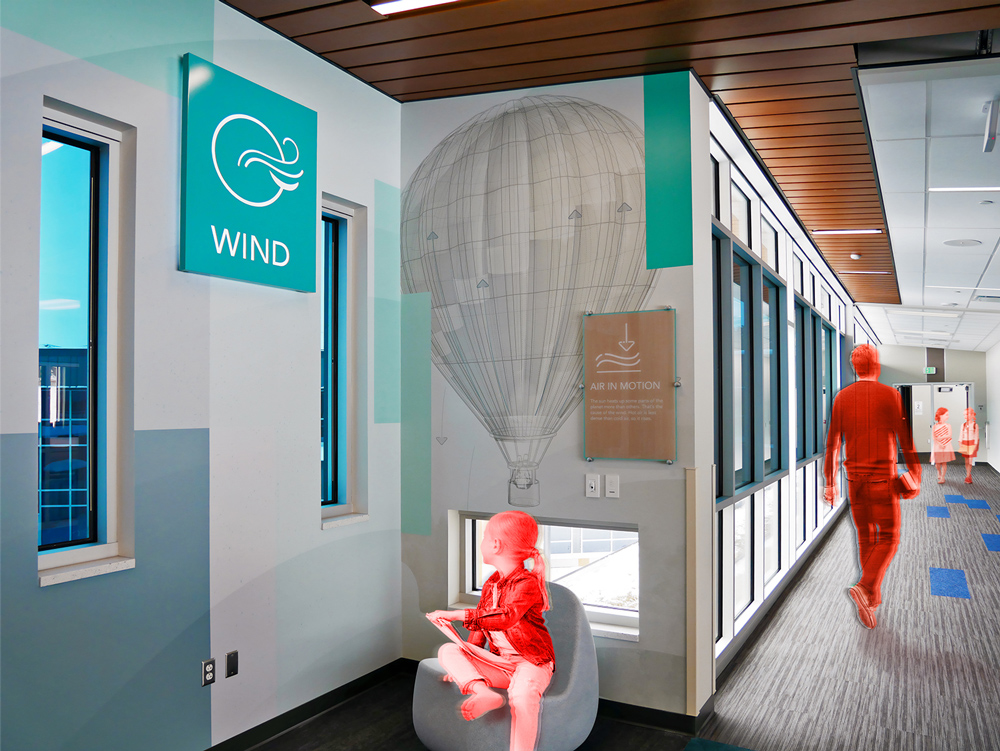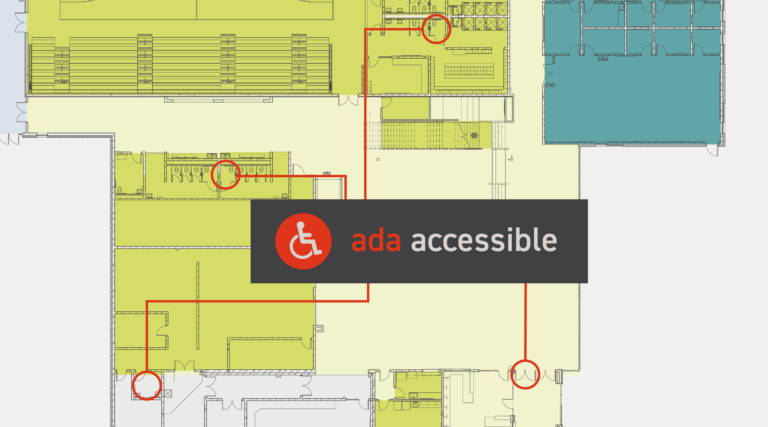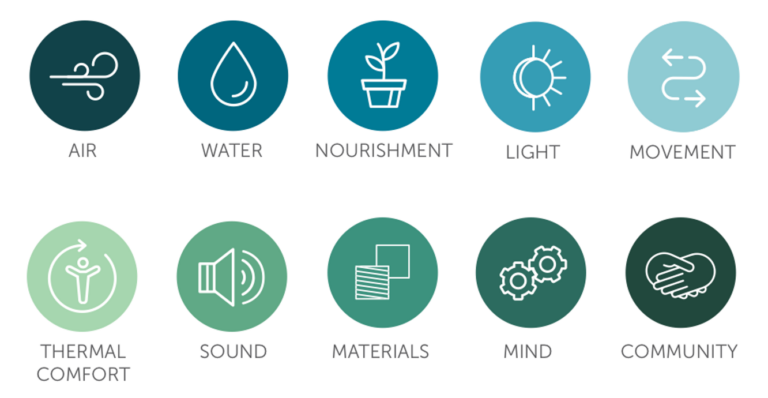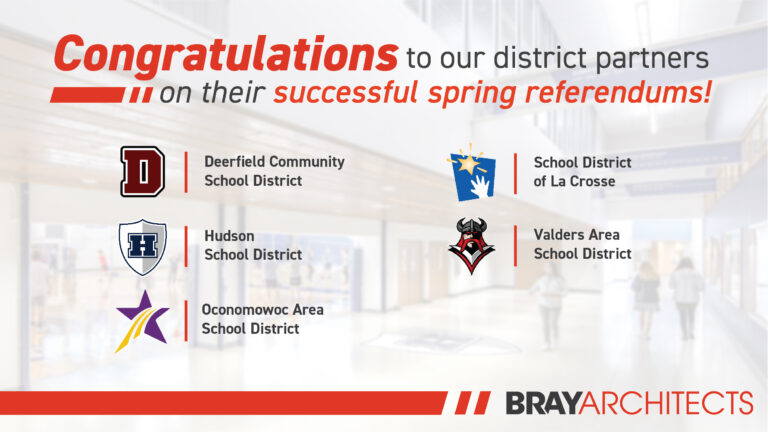This is the third of a four-part series looking at educational visioning and its role in the school design process. Read part two.
Identity
Every school district has a unique set of priorities, and that’s addressed through identity. That’s when the design team and the district develop an overarching theme that guides their work on this building.
The theme is a recurring idea or set of ideas that unite all parts of a building. It can impact everything from the shape of the building to its interior wall colors.
When developing the theme, it’s important to consider factors like:
- environment (location, geography, and sustainability)
- context (history, culture, population, and community)
- education (grade levels, curriculum, and pedagogy)
Ideally, the team will address each factor, but one or two will likely drive the theme.
For example, at JC McKenna Middle School in Evansville, WI, Bray Architects and Evansville Community School District developed a theme of community that reflects the surrounding city and neighborhoods. Two perpendicular corridors in the school mimic two important streets in their city. The design team carried this theme through to the classrooms. Groupings of classrooms, or “houses,” sit around open resource areas called yards – a nod to the neighborhoods adjacent to the school.
How does the team know they’re on the right path when developing the theme? Project leaders agree that there’s usually an intuitive sense when the right direction emerges. The district and community get excited about the proposed theme. Building this enthusiasm early in the project will help the community develop a sense of ownership.
Bray Tip: Connect Often
The educational visioning process isn’t just for the early stages of a project. Kate Egan, architect and project leader at Bray, suggests that designers connect with educators throughout a project.
“This is about visioning, so it makes sense to bring it up at the beginning of a project,” she says. “But the architectural team should also bring it up after the referendum passes, and even after construction starts.”
The conversations are not only about creating a plan for improved buildings. They also provide a chance for teachers and students to learn about the unique features of their building.
For example, at Neenah High School, Bray worked with our partner Miron Construction to hold an event during construction. At this event, the community could learn more about the new school’s geothermal system, building foundations, and utilities.
Connecting often can help set the stage for future projects. It’s never too early to start the conversation. As construction on one school finishes, district leadership, the community, and the architectural team can begin the visioning process again for the next project.
In the last part, we’ll look at how a district’s pedagogy impacts the visioning process. Read part four.
Image above: A learning resource area at Forest Edge Elementary School.



